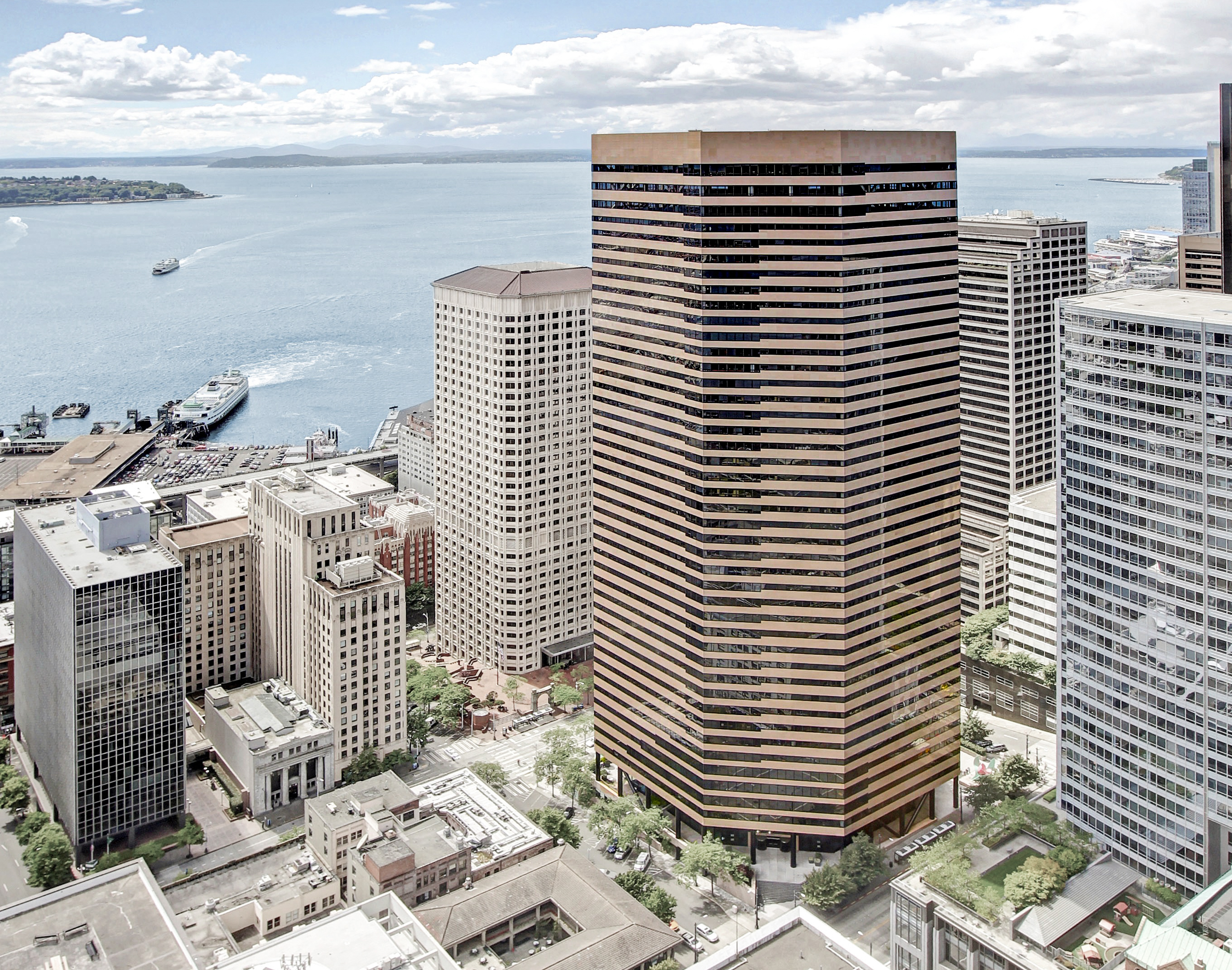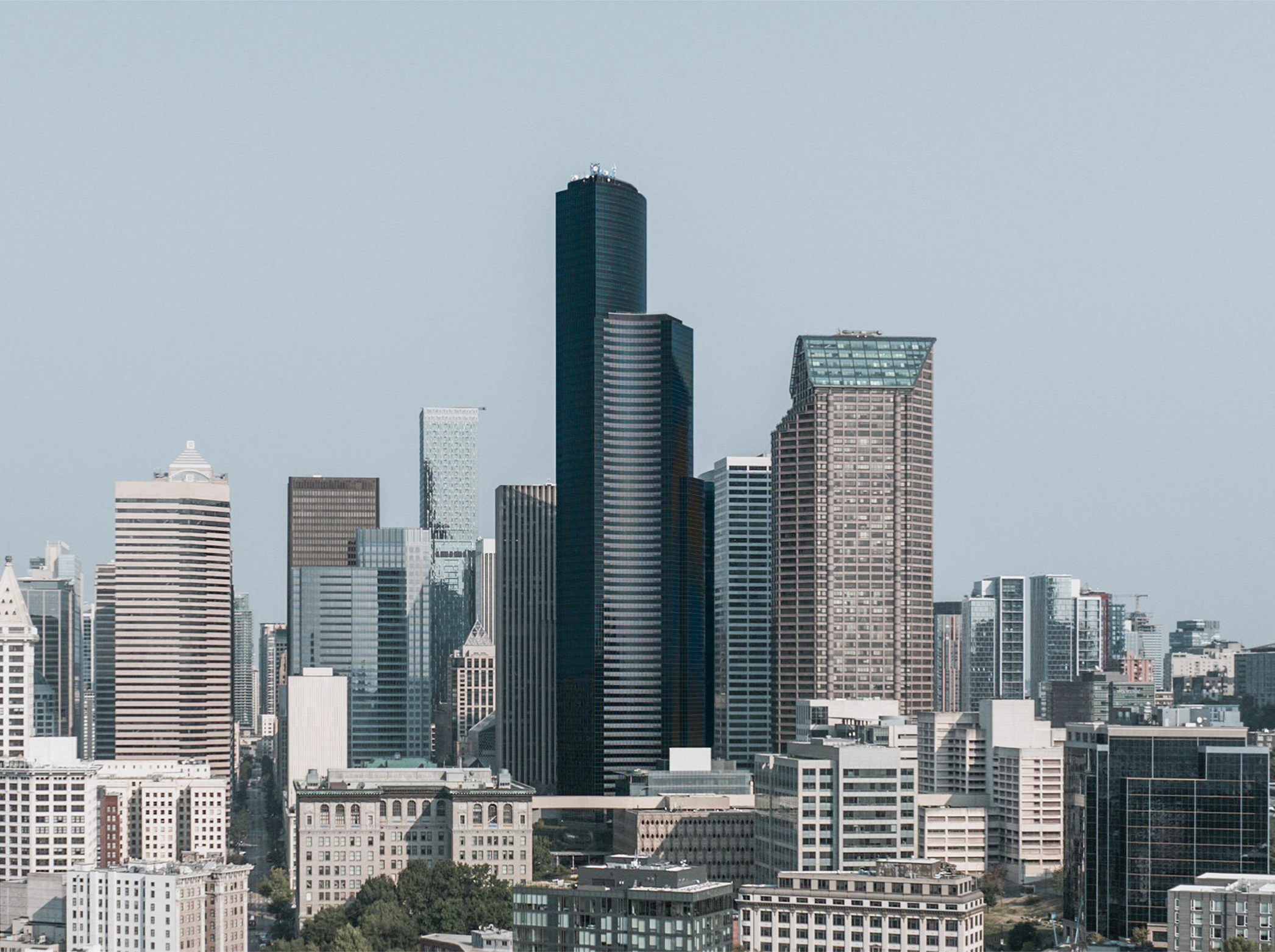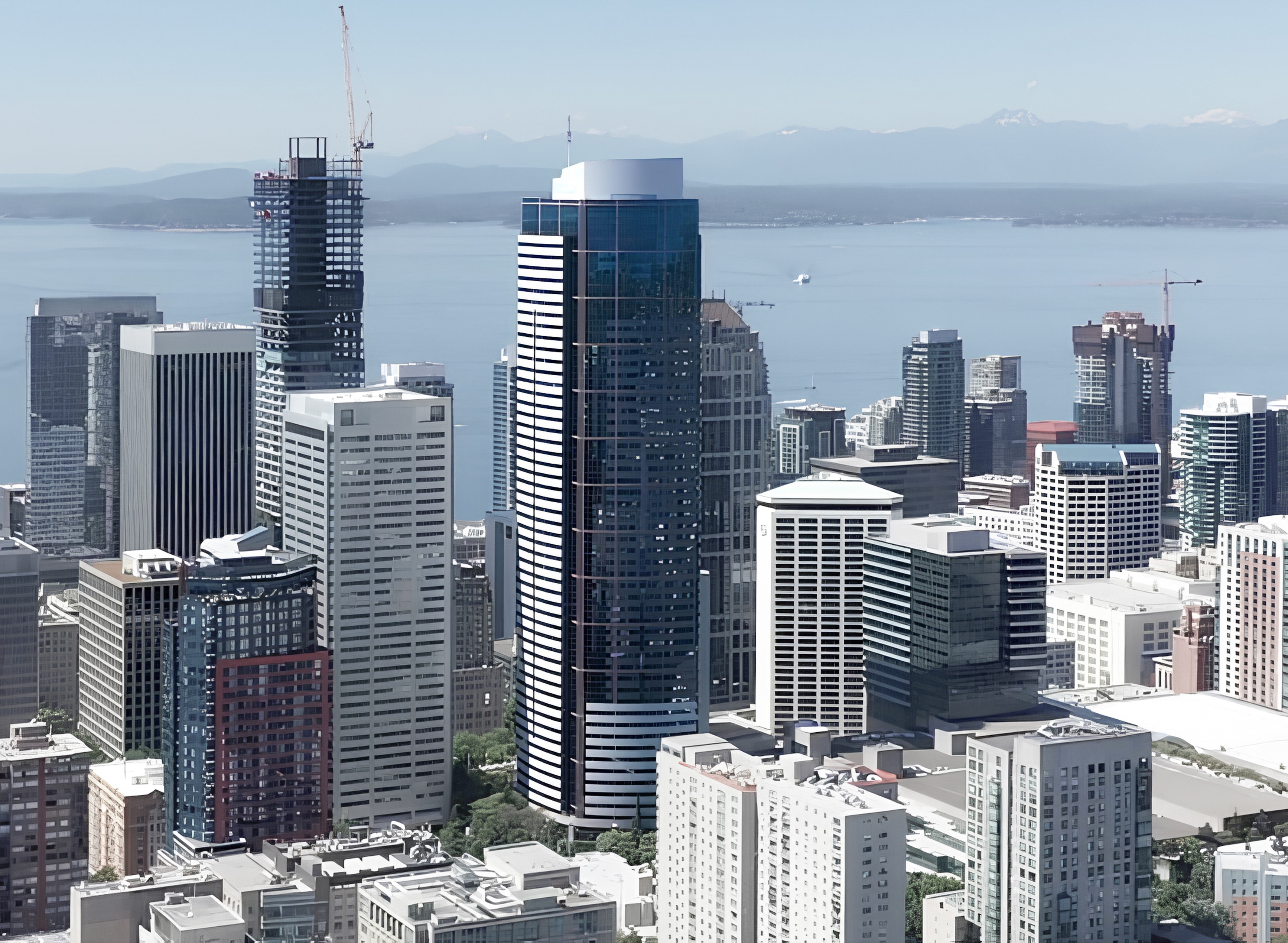The DocuSign Tower is a Modern Style skyscraper designed by McKinley Architects, and built in 1983 in Seattle, WA.
DocuSign Tower is not the only name you might know this building by though. It is common for companies to want to attach their names to iconic buildings when they move in, or for the general public to come up with nicknames, and this one is no exception. The building has changed names several times over the years, and is also known as:
- First Interstate Center between 1983 and 1996.
- Wells Fargo Center between 1996 and 2013.
- DocuSign Tower from 2013 until this day.
Its precise street address is 999 Third Avenue, Seattle, WA. You can also find it on the map here.
The building underwent a major restoration in 2019. The architect commissioned to undertake this restoration was Mithun.




